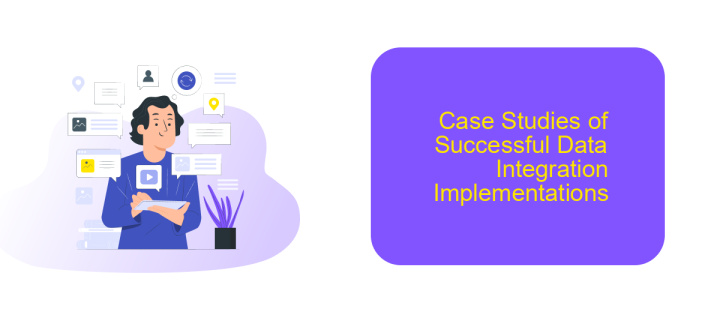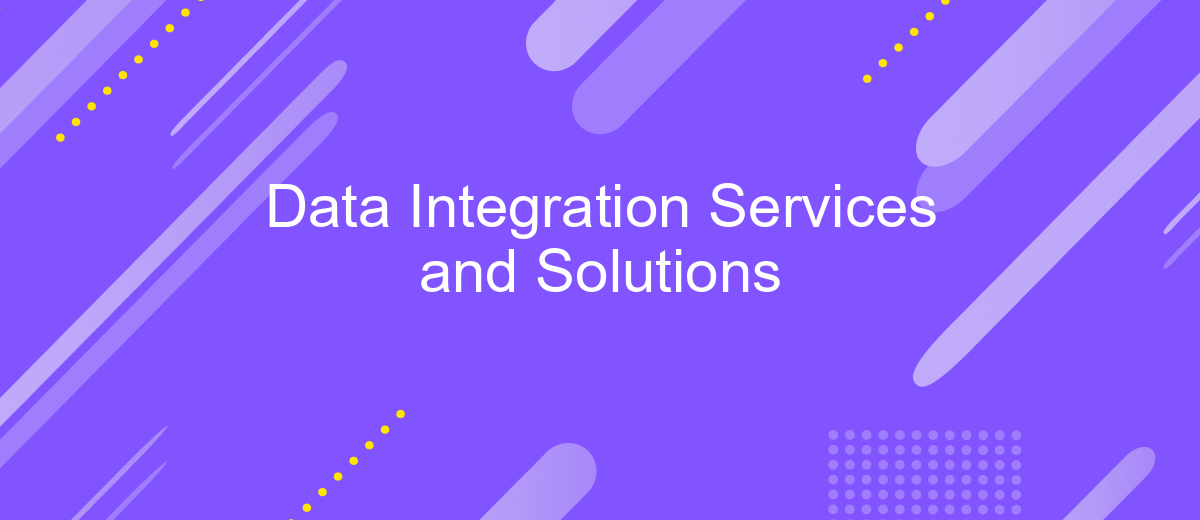Data Integration Services and Solutions
In today's data-driven world, businesses rely on seamless data integration to enhance decision-making and operational efficiency. Data Integration Services and Solutions offer comprehensive tools and methodologies to consolidate diverse data sources, ensuring consistency, accuracy, and accessibility. This article explores the latest trends, technologies, and best practices in data integration, helping organizations harness the full potential of their data assets.
Introduction to Data Integration Services and Solutions
Data integration services and solutions are essential for businesses looking to streamline their operations and ensure seamless data flow between various systems. These services enable organizations to combine data from different sources, providing a unified view that enhances decision-making processes and operational efficiency.
- Automated data synchronization
- Real-time data processing
- Scalability and flexibility
- Enhanced data accuracy and consistency
One notable service in this domain is ApiX-Drive, which offers a user-friendly platform for setting up integrations without requiring extensive technical knowledge. ApiX-Drive allows businesses to connect various applications and automate workflows, ensuring that data is always up-to-date and accessible. By leveraging such solutions, companies can significantly reduce manual data handling and focus on strategic initiatives.
Types of Data Integration Tools and Technologies

Data integration tools and technologies come in various forms, each serving specific needs and environments. ETL (Extract, Transform, Load) tools are widely used for data warehousing and analytics, enabling the extraction of data from multiple sources, transforming it into a consistent format, and loading it into a target database. Examples include Apache Nifi and Talend. Data replication tools, such as Fivetran, focus on copying and synchronizing data from one database to another, ensuring consistency and availability.
API-based integration platforms like ApiX-Drive offer a flexible and scalable solution for real-time data integration, allowing businesses to connect various applications and automate workflows without extensive coding. These platforms support a wide range of connectors and provide user-friendly interfaces for setting up integrations. Additionally, iPaaS (Integration Platform as a Service) solutions, such as MuleSoft, provide comprehensive integration capabilities, including API management, data mapping, and orchestration, making them suitable for complex enterprise environments.
Best Practices for Data Integration

Effective data integration is crucial for ensuring seamless data flow across various systems and applications. To achieve this, organizations should follow best practices that enhance data accuracy, reliability, and accessibility.
- Define Clear Objectives: Establish clear goals for your data integration project to ensure alignment with business needs.
- Choose the Right Tools: Select integration tools that match your requirements. Services like ApiX-Drive can automate integrations, reducing manual effort and errors.
- Ensure Data Quality: Implement data cleansing processes to maintain high data quality and consistency across systems.
- Monitor and Maintain: Regularly monitor integration processes and perform maintenance to address any issues promptly.
- Secure Data: Ensure robust security measures are in place to protect sensitive data during integration.
By adhering to these best practices, organizations can streamline their data integration processes, improve data accuracy, and enhance overall operational efficiency. Utilizing services like ApiX-Drive can further simplify and automate the integration tasks, allowing businesses to focus on strategic objectives.
Case Studies of Successful Data Integration Implementations

Successful data integration implementations have significantly transformed various organizations by streamlining their data workflows and enhancing decision-making processes. One notable example is a leading e-commerce company that faced challenges with disparate data sources and inefficient manual processes. By leveraging ApiX-Drive, they successfully integrated their CRM, ERP, and marketing platforms, resulting in a unified data ecosystem.
Another compelling case is a healthcare provider that needed to consolidate patient information from multiple systems to improve care coordination and reporting. Through the use of ApiX-Drive, they automated data synchronization between electronic health records (EHR), billing systems, and appointment scheduling tools, leading to improved patient outcomes and operational efficiency.
- A financial services firm reduced reporting time by 50% by integrating their accounting and customer management systems using ApiX-Drive.
- A retail chain enhanced inventory management by synchronizing sales and warehouse data, minimizing stockouts and overstock situations.
- An educational institution streamlined student data management by connecting their learning management system (LMS) with administrative databases.
These case studies highlight the transformative power of effective data integration solutions. By utilizing tools like ApiX-Drive, organizations can seamlessly connect disparate systems, automate workflows, and unlock valuable insights, ultimately driving business growth and efficiency.
Future Trends in Data Integration
As we look to the future of data integration, several key trends are emerging that promise to reshape the landscape. One significant trend is the increasing use of artificial intelligence and machine learning to automate and optimize data integration processes. These technologies can identify patterns and anomalies in data, making integration more efficient and accurate. Additionally, the rise of real-time data processing is pushing organizations to adopt more agile and responsive integration solutions, ensuring that data is available when and where it is needed.
Another notable trend is the growing importance of low-code and no-code platforms, which empower non-technical users to create and manage data integrations with ease. Services like ApiX-Drive are at the forefront of this movement, providing user-friendly tools that simplify the integration process. This democratization of data integration allows businesses of all sizes to harness the power of their data without requiring extensive technical expertise. As these trends continue to evolve, they will undoubtedly drive more innovative and efficient data integration practices across industries.
FAQ
What is Data Integration?
Why is Data Integration important for businesses?
What are the common challenges in Data Integration?
How can businesses automate their Data Integration processes?
What are the benefits of using a service like ApiX-Drive for Data Integration?
Strive to take your business to the next level, achieve your goals faster and more efficiently? Apix-Drive is your reliable assistant for these tasks. An online service and application connector will help you automate key business processes and get rid of the routine. You and your employees will free up time for important core tasks. Try Apix-Drive features for free to see the effectiveness of the online connector for yourself.

